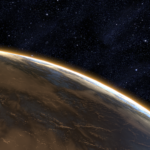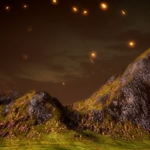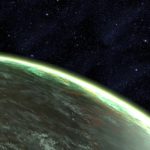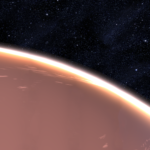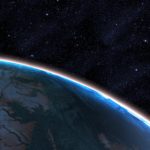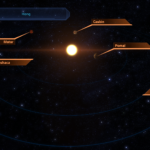System Specs:
- Stellar Mass: N/A Sol Masses
- Stellar Class: N/A
- Luminosity: N/A Sol
- Planets: 5
- Moons: 0
- Asteroid Belts: 0
- Asteroids: 0
- Objects: 0
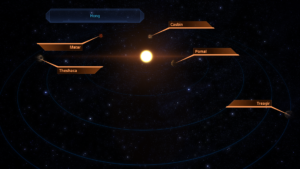
It is likely named for China’s first successful satellite, the Dong Fang Hong I (东方红一号, “Red East 1”).
–
Planets Directory:
- Pomal
- Casbin
- Matar
- Theshaca
- Treagir
–
Pomal:
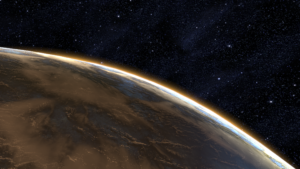
- Orbital Distance: _ 76.4 AU
- Orbital Period: _ 158.0 Earth-years
- Keplerian Ratio: _ 17.863
- Radius: _ 6,959 km
- Day Length: _ 158.0 Earth-hours
- Atmospheric Pressure: _ 0.44 atm
- Surface Temp: _ 1,157 °C
- Surface Gravity: _ 0.66 g
- Mass: _ 0.78 Earth-masses
Pomal is an enormous terrestrial planet, with a very dense atmosphere of carbon dioxide and sodium. The surface is scorching hot, and mainly composed of sodium oxides and deposits of nickel. There is evidence that Pomal was once covered with broad, shallow seas. Should a probe ever be sent to the surface, a check for ancient fossil life might prove valuable.
–
Casbin:
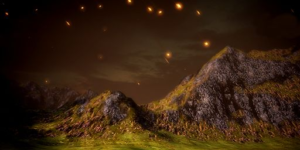
- Orbital Distance: _ 76.4 AU
- Orbital Period: _ 158.0 Earth-years
- Keplerian Ratio: _ 17.863
- Radius: _ 6,959 km
- Day Length: _ 158.0 Earth-hours
- Atmospheric Pressure: _ 0.44 atm
- Surface Temp: _ 1,157 °C
- Surface Gravity: _ 0.66 g
- Mass: _ 0.78 Earth-masses
Casbin is a classic “pre-garden” terrestrial world, with conditions similar to those on Earth millions of years ago. Its hot, humid atmosphere is mainly composed of nitrogen and carbon dioxide. An increasing amount of the surface is covered by simple lichen and algae. Should no unexpected calamity occur, these tiny plants will change the atmosphere to an Earth-like nitrogen-oxygen mix over the next few millennia.
Due to its potential for future habitability and sapient life, Casbin has been designated a Sanctuary World by the Citadel Council. Landing is prohibited by law, and any disturbance of the fragile young ecosystem will result in harsh fines and imprisonment.
At present, the planet is passing through the debris trail of a long-period comet.
–
Matar:
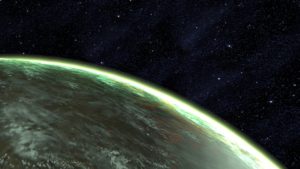
- Orbital Distance: _ 76.4 AU
- Orbital Period: _ 158.0 Earth-years
- Keplerian Ratio: _ 17.863
- Radius: _ 6,959 km
- Day Length: _ 158.0 Earth-hours
- Atmospheric Pressure: _ 0.44 atm
- Surface Temp: _ 1,157 °C
- Surface Gravity: _ 0.66 g
- Mass: _ 0.78 Earth-masses
Matar is a terrestrial planet with a thick atmosphere composed of nitrogen and krypton. Its frigid surface is mainly composed of sodium oxide with deposits of copper. Because of noxious surface gases, explorers are warned to use extreme caution.
Matar lacks a magnetic field. This makes it useless for discharging FTL drive cores in orbit. The energetic particles of solar wind from Hong strike the upper atmosphere directly, ionizing the krypton. This gives the planet its distinctive “minty” green-white hue.
–
Theshaca:
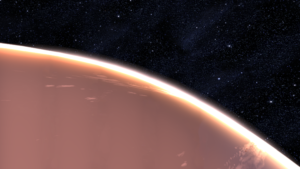
- Orbital Distance: _ 76.4 AU
- Orbital Period: _ 158.0 Earth-years
- Keplerian Ratio: _ 17.863
- Radius: _ 6,959 km
- Day Length: _ 158.0 Earth-hours
- Atmospheric Pressure: _ 0.44 atm
- Surface Temp: _ 1,157 °C
- Surface Gravity: _ 0.66 g
- Mass: _ 0.78 Earth-masses
Theshaca is a standard hydrogen-helium gas giant. In the past, it was often used as a drive discharge point for pirates raiding human settlements from the Terminus Systems. In 2178 the Alliance set up a network of covert sensing devices on Theshaca’s moons. Recordings of pirate FTL exit vectors over the course of six months led the Alliance Navy to eight major pirate anchorages. Since the “Theshaca Raids,” no ships from the Terminus have been reported in the Hong system.
–
Treagir:
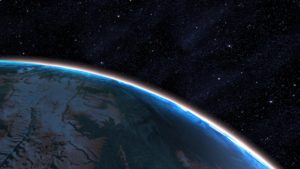
- Orbital Distance: _ 76.4 AU
- Orbital Period: _ 158.0 Earth-years
- Keplerian Ratio: _ 17.863
- Radius: _ 6,959 km
- Day Length: _ 158.0 Earth-hours
- Atmospheric Pressure: _ 0.44 atm
- Surface Temp: _ 1,157 °C
- Surface Gravity: _ 0.66 g
- Mass: _ 0.78 Earth-masses
Treagir is a tiny “ice dwarf”, with a trace atmosphere of xenon and krypton. The frozen surface is mainly composed of water ice and ammonia. Cryo-volcanic processes are gradually repaving the surface with sheets of fresh ice.
–
video
